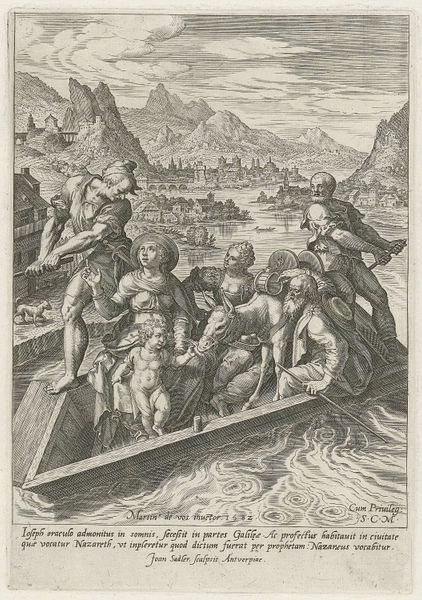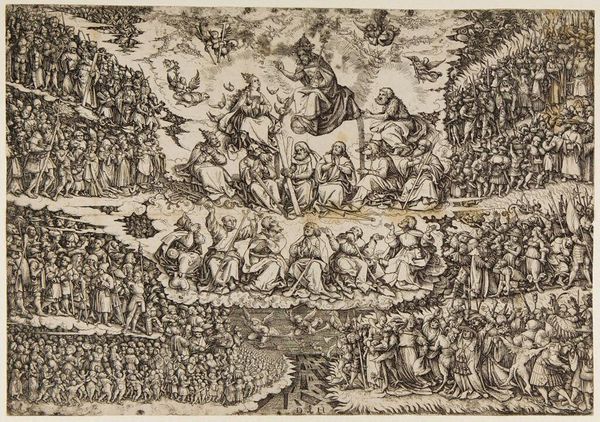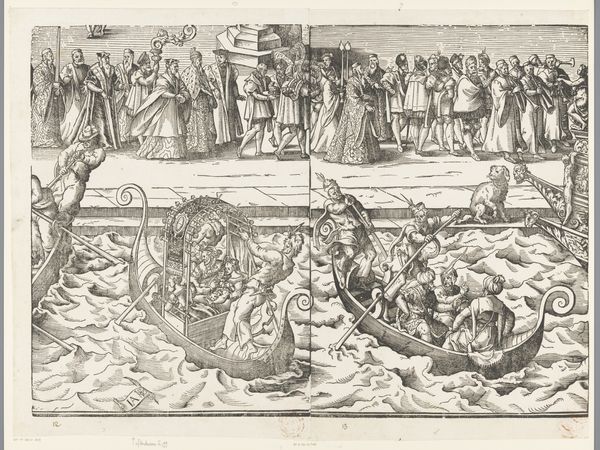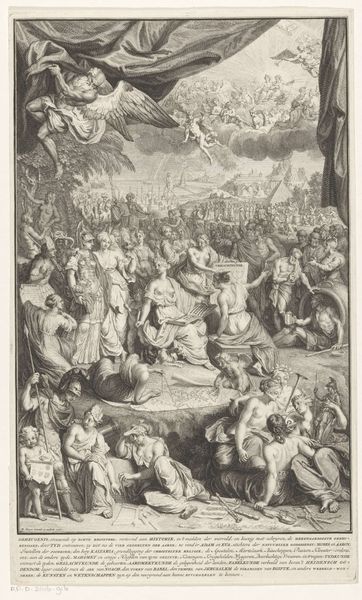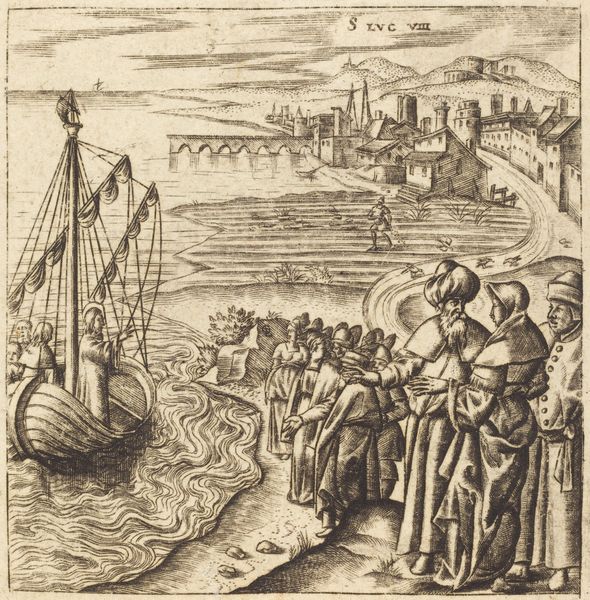
drawing, print, ink, pen, engraving
#
drawing
#
allegory
#
pen drawing
# print
#
old engraving style
#
ink
#
pen
#
history-painting
#
northern-renaissance
#
engraving
Dimensions: height 272 mm, width 194 mm
Copyright: Rijks Museum: Open Domain
Curator: This print, "Het schip van de strijdbare katholieke kerk," made between 1560 and 1608 by Pieter van der Borcht, is rich in historical context. What’s your initial reaction to it? Editor: It's an incredibly detailed piece, a northern Renaissance engraving, filled with figures on a ship battling turbulent seas. The mood feels really tense, almost chaotic. How do you interpret this work? Curator: I see a potent allegory of the Catholic Church during the Counter-Reformation. Notice how the ship, the "Navis Ecclesiae," is under attack? The figures in the water likely represent the challenges and "enemies" faced by the Church during this period. Consider the socio-political landscape. What was the church facing during that time? Editor: Religious reformation! So this print visualizes that struggle, with the ship symbolizing the Church fighting to stay afloat amidst the Protestant Reformation. Curator: Precisely. And the figures on the ship – who do you think they might represent? How are they placed? Editor: I guess the figures on deck represent the clergy and those faithful to the Church, and they appear to be defending it, literally fighting off those in the sea. The hierarchy even seems deliberate, those at the top perhaps more closely linked to God and the heavens. Curator: Yes, their positioning emphasizes their perceived divine authority. Think about the power dynamics inherent in such a representation, the reinforcement of a rigid social and spiritual order. Editor: I see it now. It’s more than just a historical depiction; it's a visual argument for the Church's authority amidst immense upheaval. I hadn't initially considered it as an assertion of power. Curator: And it also allows us to examine the ways in which the Church, in this historical moment, sought to solidify its position by visually portraying its struggles. It reflects the narratives they constructed about themselves and their opponents. Editor: Thinking about it this way makes the print much more relevant to today. Examining power dynamics in older artwork definitely helps us to analyze social structures, even in contemporary society.
Comments
No comments
Be the first to comment and join the conversation on the ultimate creative platform.



